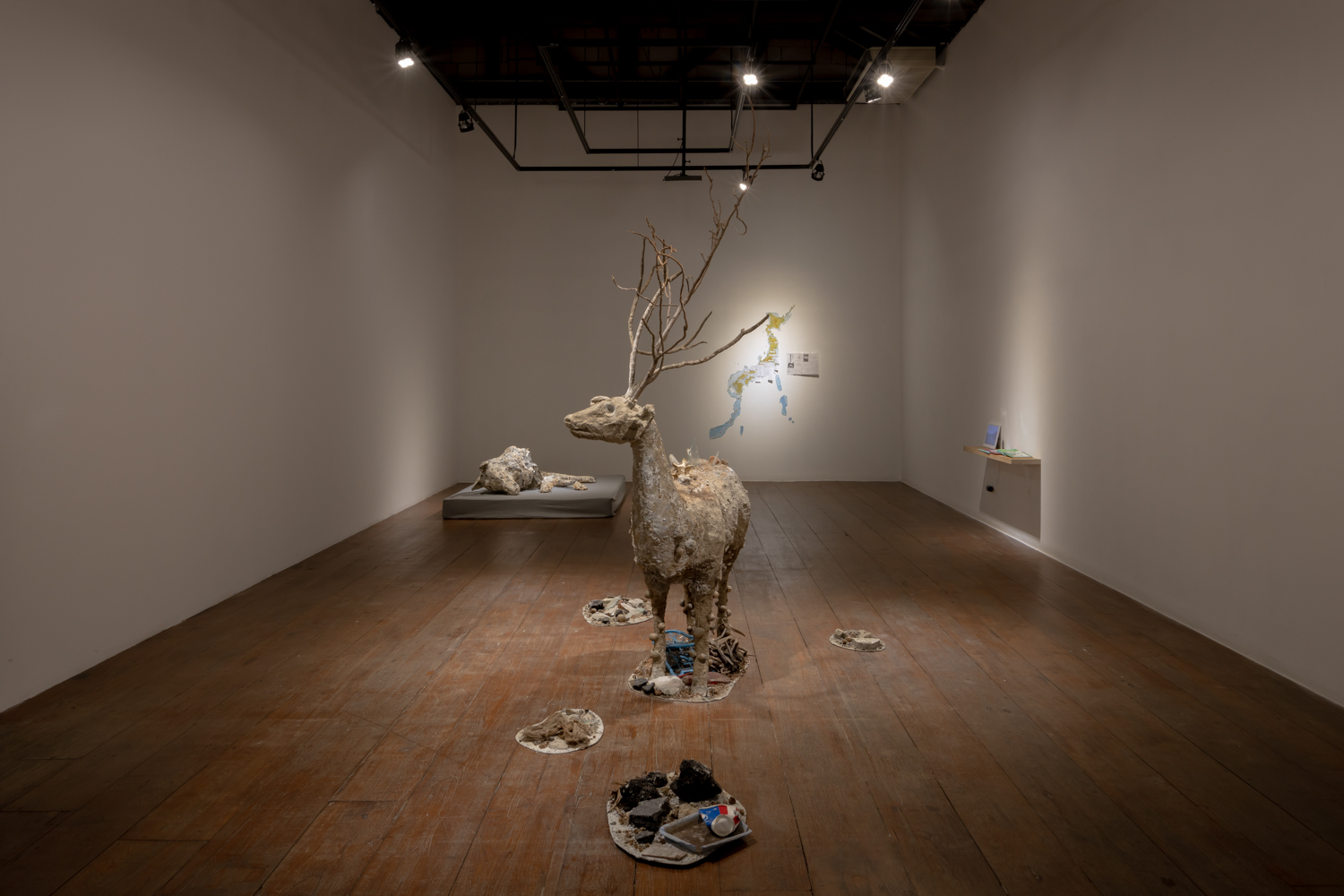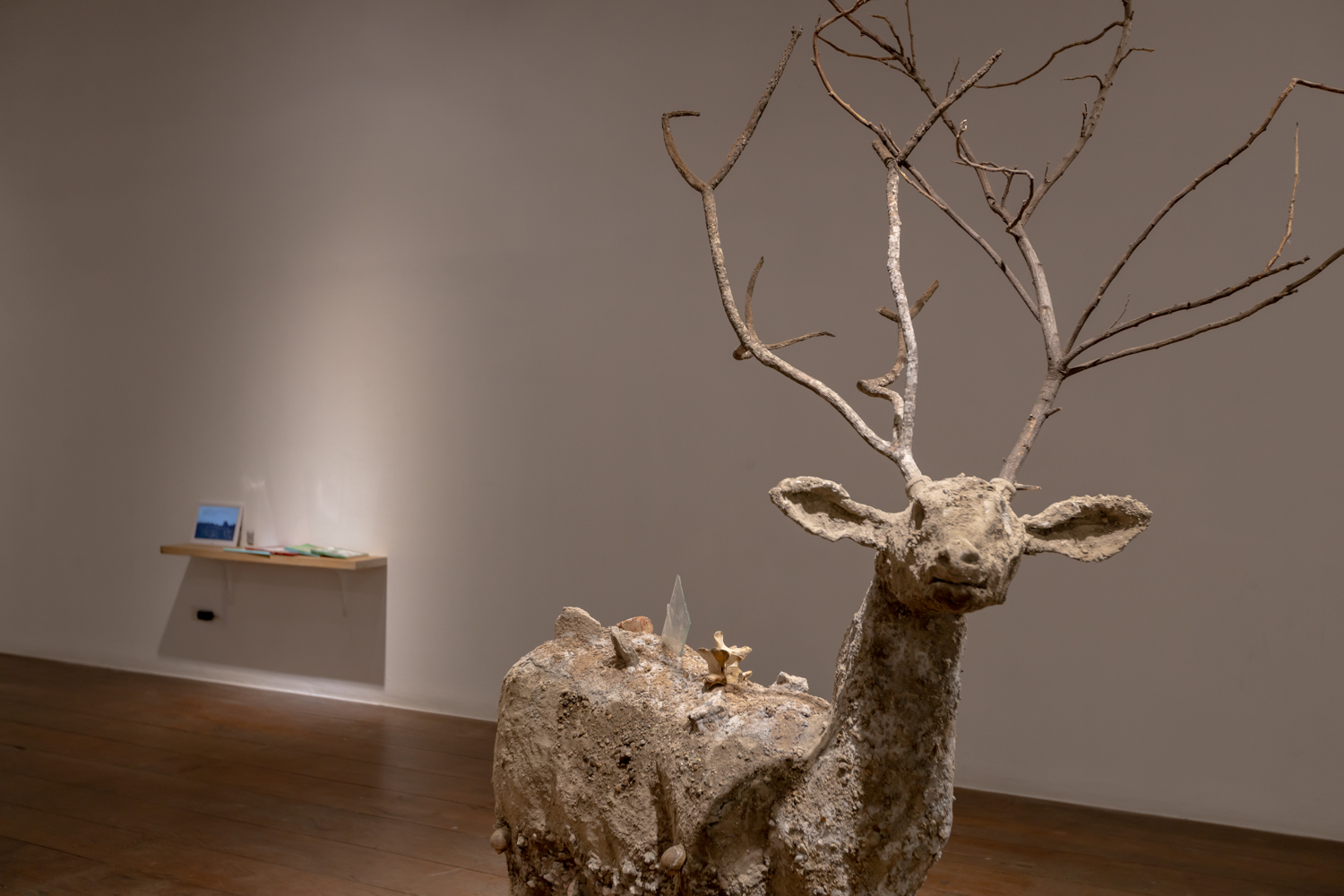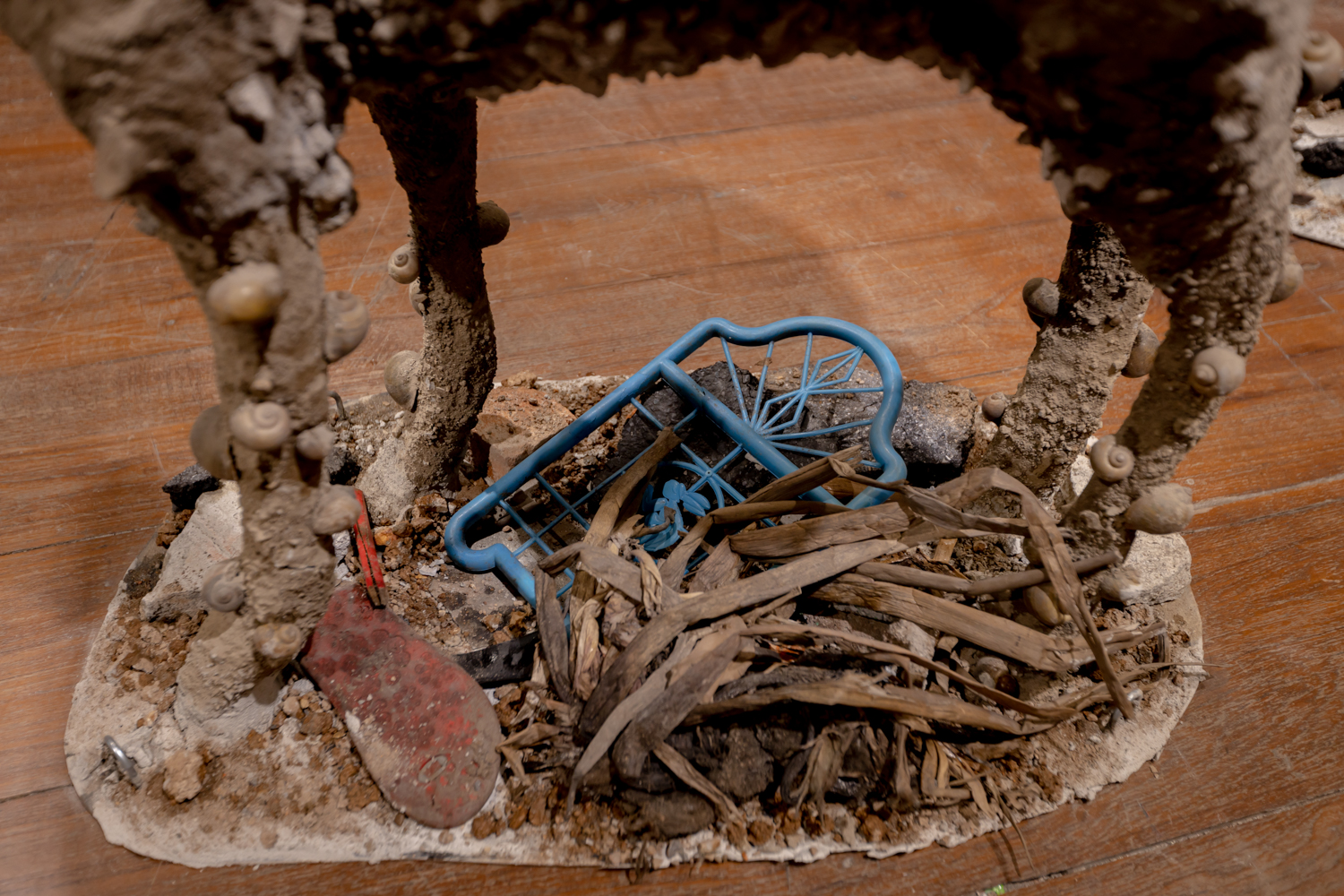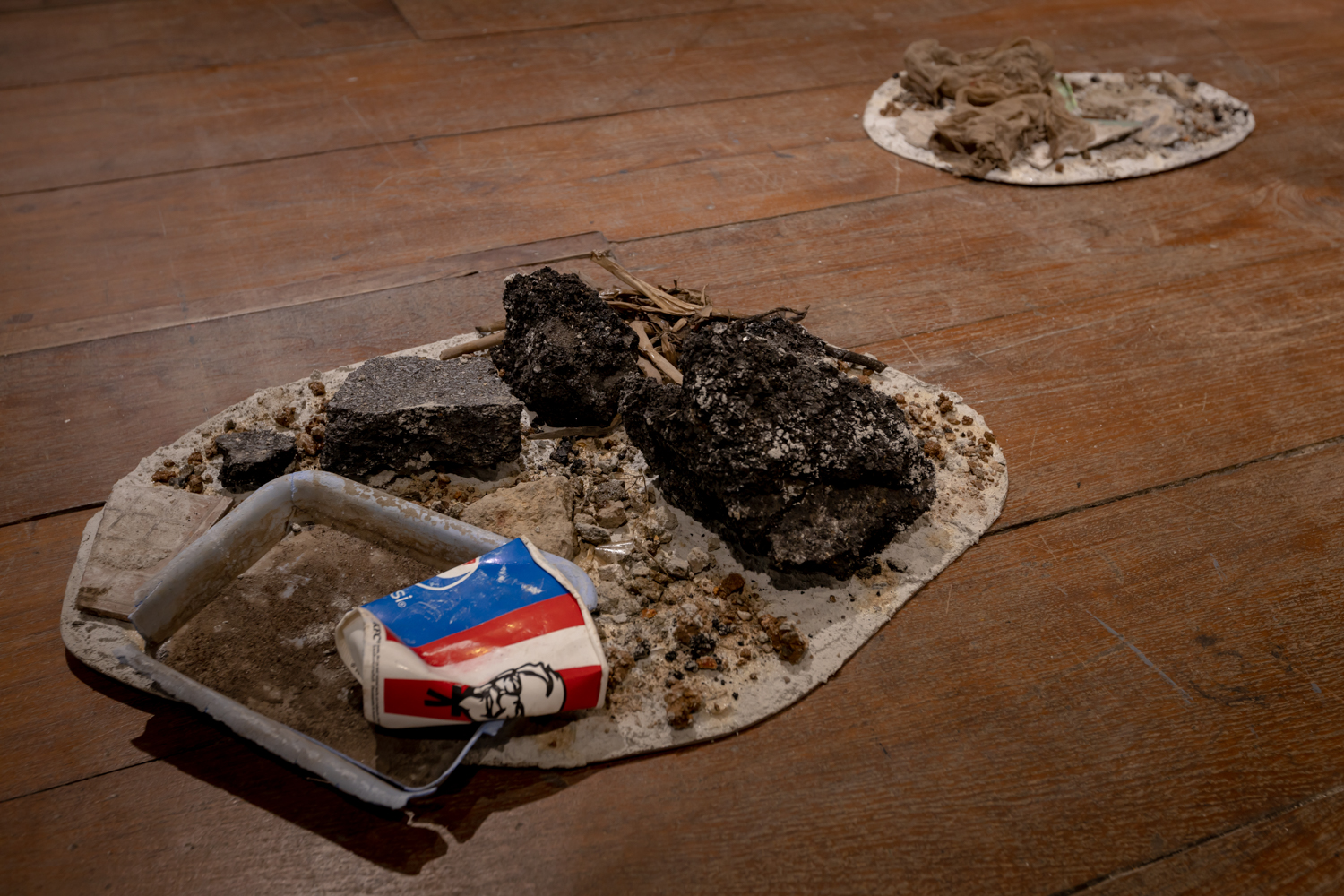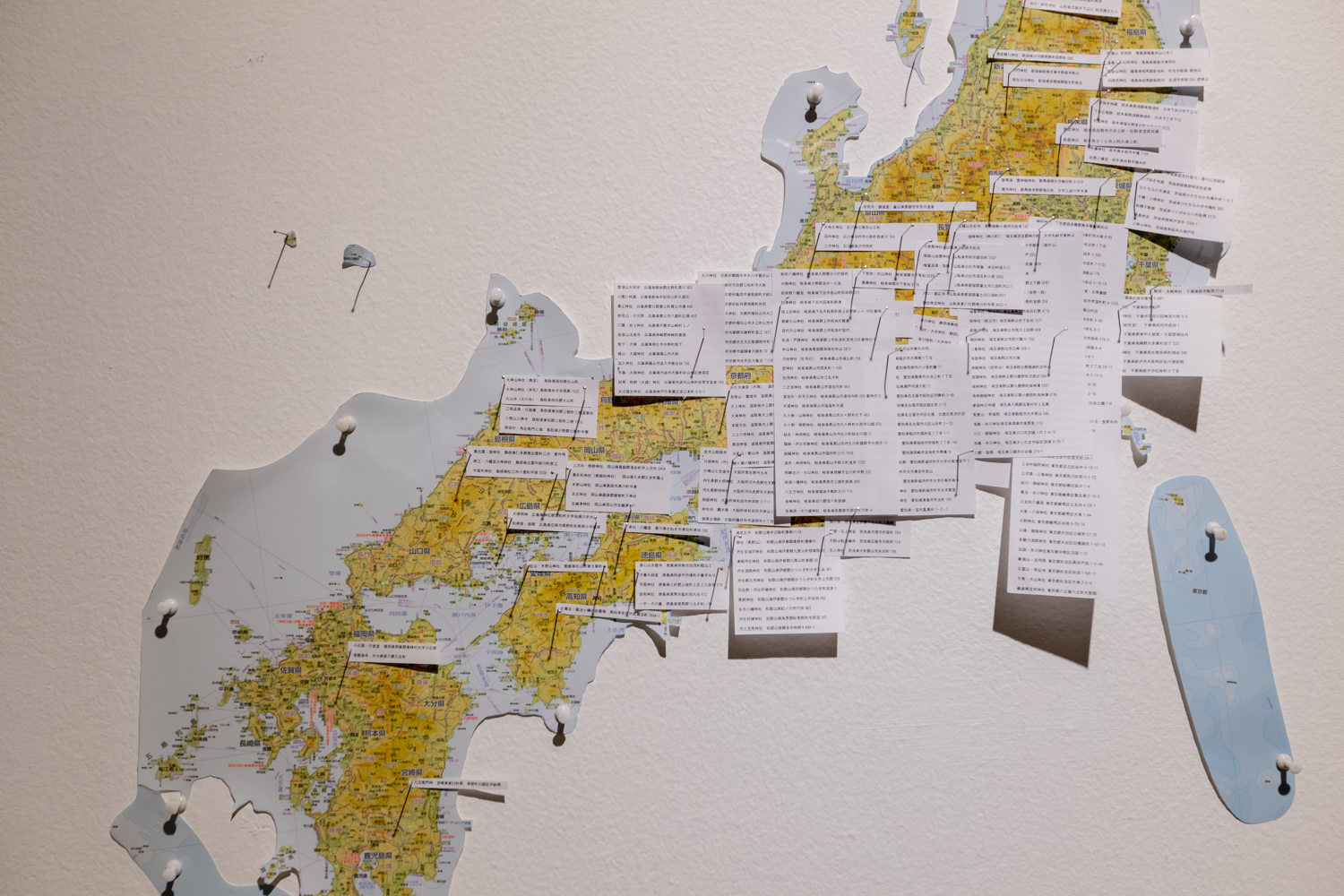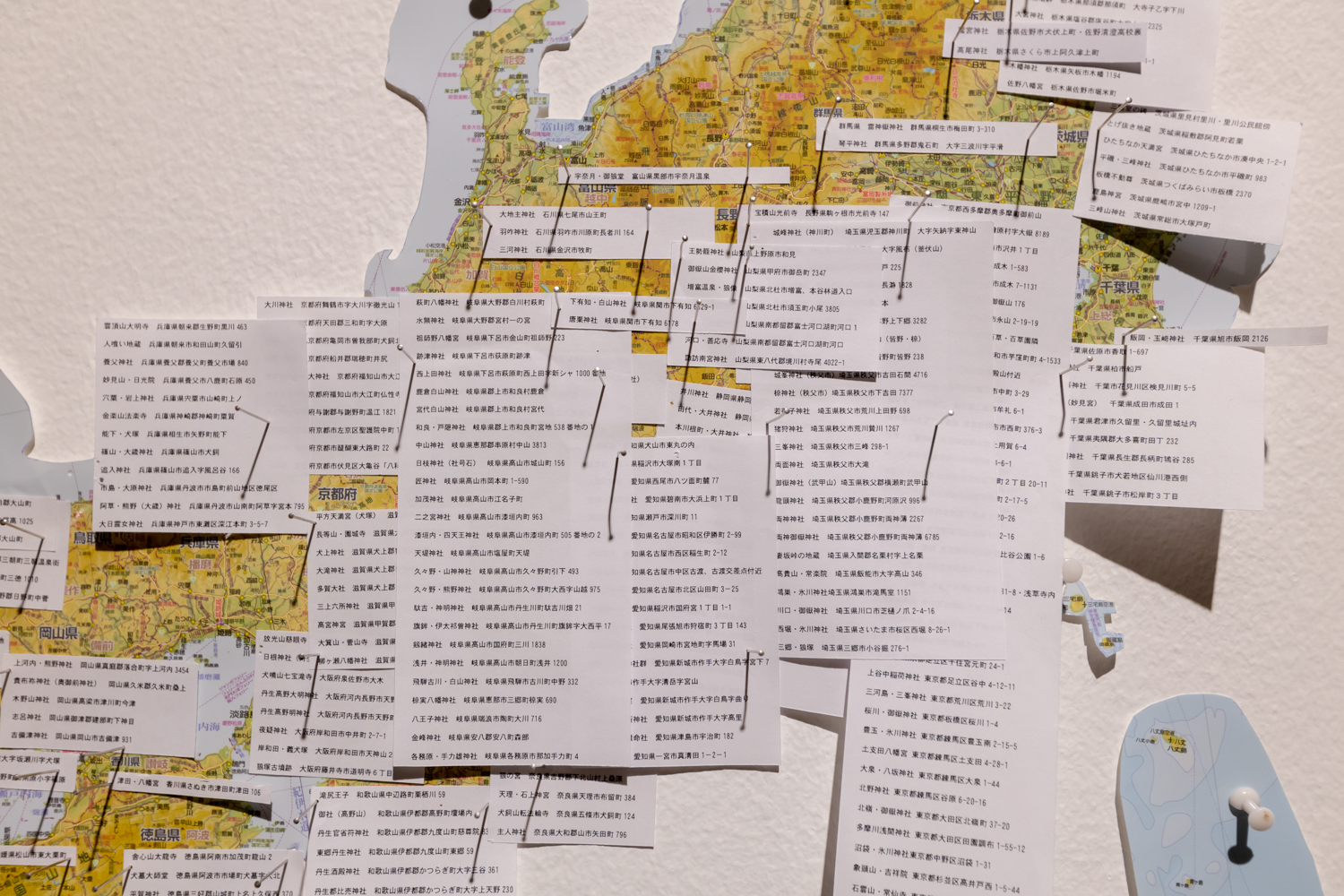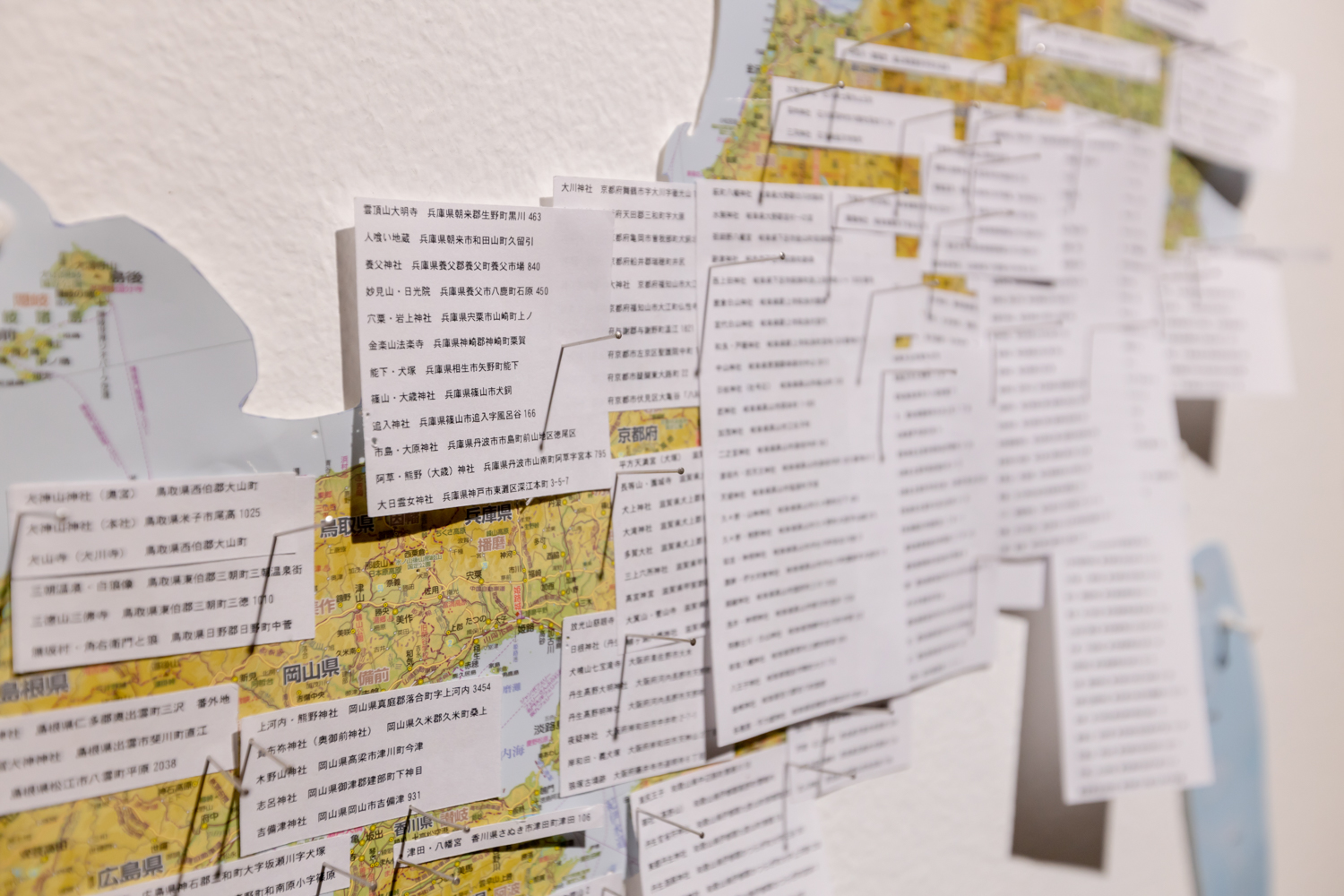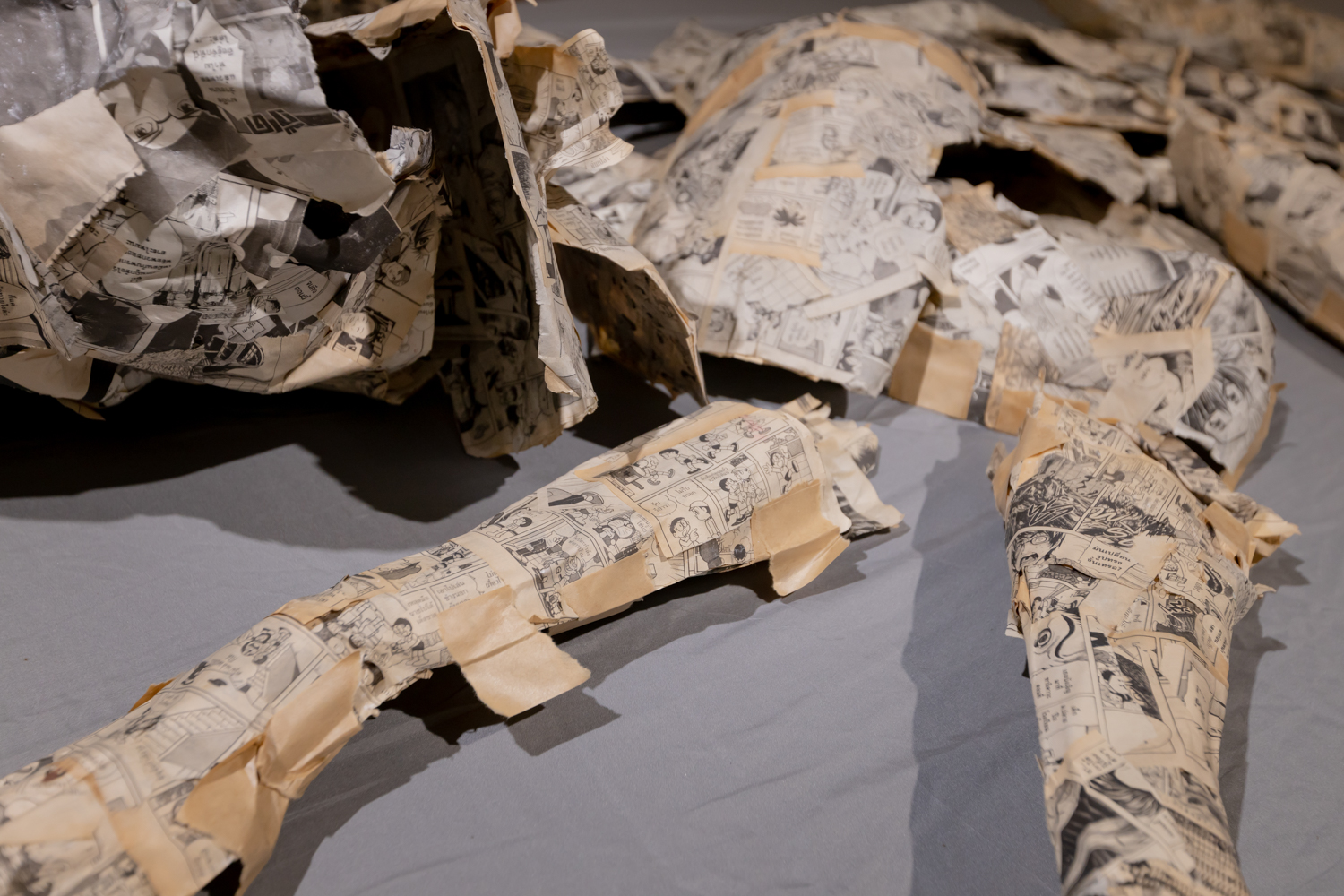WELCOMING A NEW ART SPACE ‘WARIN LAB CONTEMPORARY’ WITH THIS FIRST EXHIBITION BY RUENGSAK ANUWATWIMON FEATURING THE NARRATIVE AROUND THE LOSS AND DISAPPEARANCE OF SPECIES FROM NATURE
TEXT: PRATARN TEERATADA
PHOTO: KETSIREE WONGWAN
(For Thai, press here)
Art spaces in Bangkok are constantly changing. The O.P. GARDEN’s art cluster that was once home to Thailand’s leading galleries such as Serindia Gallery and ATTA Gallery is now moving onto a new chapter.

This movement originated from Sukhonthip Praharnphap, the owner of Lalanta Gallery and curator, Loredana Pazzini-Paracciani whose discussion about the possibility for a new art space has led to the conception of “Warin Lab Contemporary”. With the intention to create contents that can creatively and artistically educate people. The first year of the project puts an emphasis on environmental issues, hence the birth of the debut project “Swamped” by Taweesak Moonsawat, which took place earlier this year. With the succeeding “Reincarnations III – Ecologies of Life ”, Loredana took the role as the curator. Inspired by the works that artist, Ruengsak Anuwatwimon, created and showcased at Museum Siam as a part of BAB festival last year, and personally impressed by Ruengsak’s previous series Reincarnations II, which he created for Singapore Biennale 2019, Loredana gathered information, data, as she dove down the realm of animals, plants and the ecology behind their existences. Gradually, everything fell into place and her collaboration with Ruengsak for Reincarnations III – Ecologies of Life finally took off.


Reincarnations III – Ecologies of Life features the narrative that revolves around the life cycles of the animals that are facing the risk of extinction or have already become extinct because of humans. One of the examples is Nue Saman, a local animal with natural habitat in the Rangsit field. The animal was last seen in 1932 and was officially announced as an extinct species in 1938 (Nue Saman was a species of deer that The National Museum of Natural History named ‘Schomburgk’ after Sir Robert Schomburgk, the British consul who was stationed in Bangkok between 1857 and 1864). Warin Lab picks up on the issue as the content of the exhibition to honor the owner of the house in which the gallery is located, Dr. Boonsong Lekagul, Thailand’s pioneering figure in natural, forestry and wild animal conservation.

For Ruengsak, his interest in plants, animals, the environment and ancient folklore started at a young age. “I grew up in Donmueng and would roam along the Prem Prachakon Canal and catch the water fleas for fun. It was then when I began to learn and distinguish between different species of creatures living in the canal. When I got into art, I began to see all these historical details in oral histories, beliefs and legends. I rarely used them in my work before this because personally I think they’re still pretty inconsistent as new stories and findings emerge all the time and debunk the old beliefs. When I started to work on ‘Reincarnations I’ during my residency in Japan in 2018, it was about the contradiction between beliefs and facts. That combined with the new modern-day Japanese convictions created this interesting mixture of components that still contain certain enigmatic elements. With the project Pollination held at MAIIAM Contemporary Art Museum, the story about Mekong River was very powerful because it was about the misuse of several scientific researches that ended up causing extremely severe and irredeemable damage to the environment. It destroyed the belief that facts can help better situations. The very same facts, if they end up in the hands of the people who use them to twist the truth, would bring nothing but disasters.” Reungsak recalls the continuity of his interest.
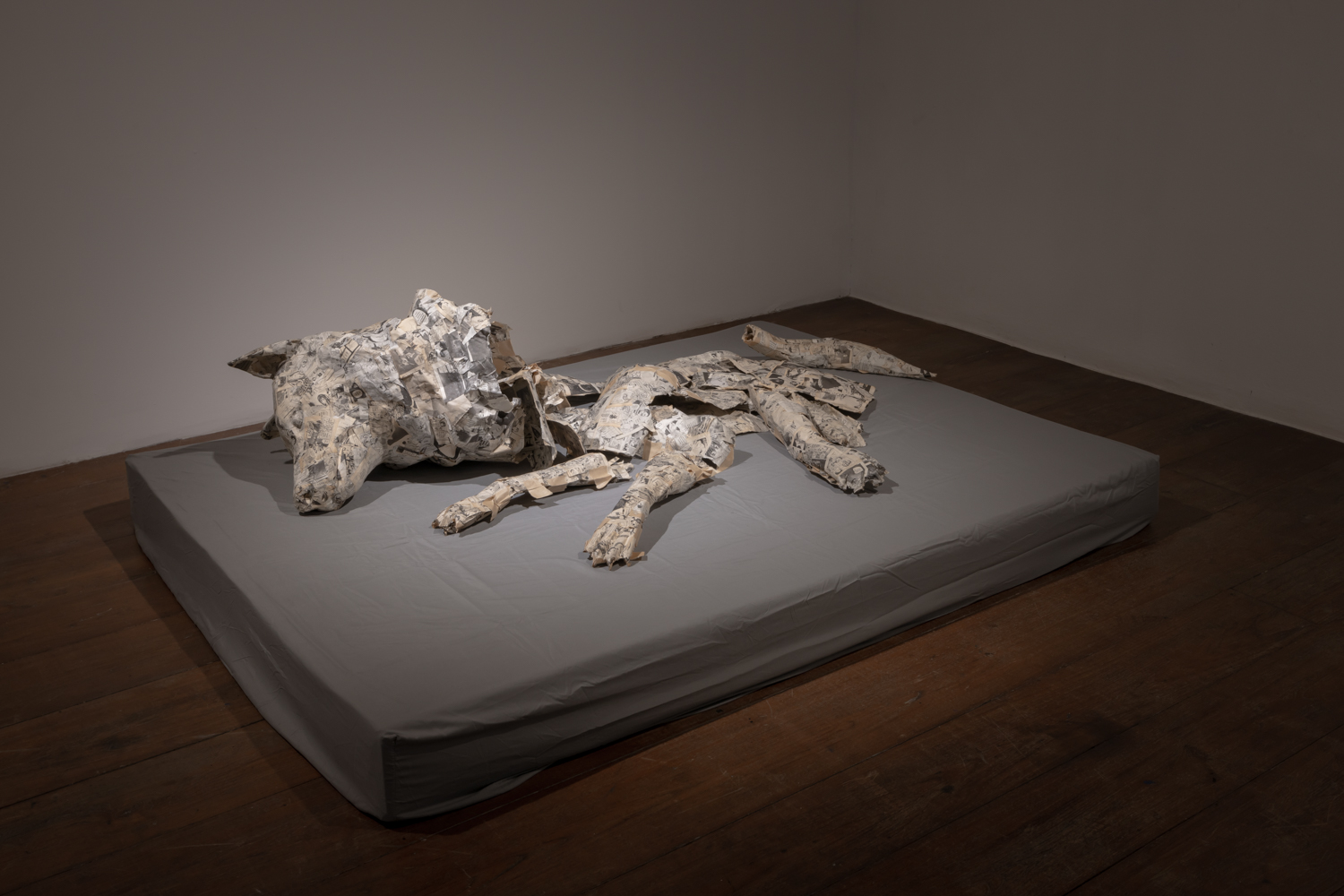
Essentially, all the three parts of Ruengsak’s Reincarnations series are about extinction or the loss and disappearance of species from nature. The artist, however, only selectively chooses the species that were destroyed by humans in order for the work to document previous lessons from the past, serving as a warning and signaling what can later become an even more disastrous crisis, even though some of the subjects seem entirely irrelevant. Data collection is, therefore, crucial to his work process.
“There’s no way we can bring back the extinct species. Using the lost or forgotten parts of history to create art is a reminder of how we should be mindful about keeping the present time in our history well documented and preserved. We need to examine every possible fact that our potential can allow. Collectively we have to come to a realization that everything is important and should be examined and retrieved. That can change the way we think and break us off from that one mindset we have been taught and told to have and uphold. The change will impact both the way we value each other as well as the environment,” Ruengsak concluded.
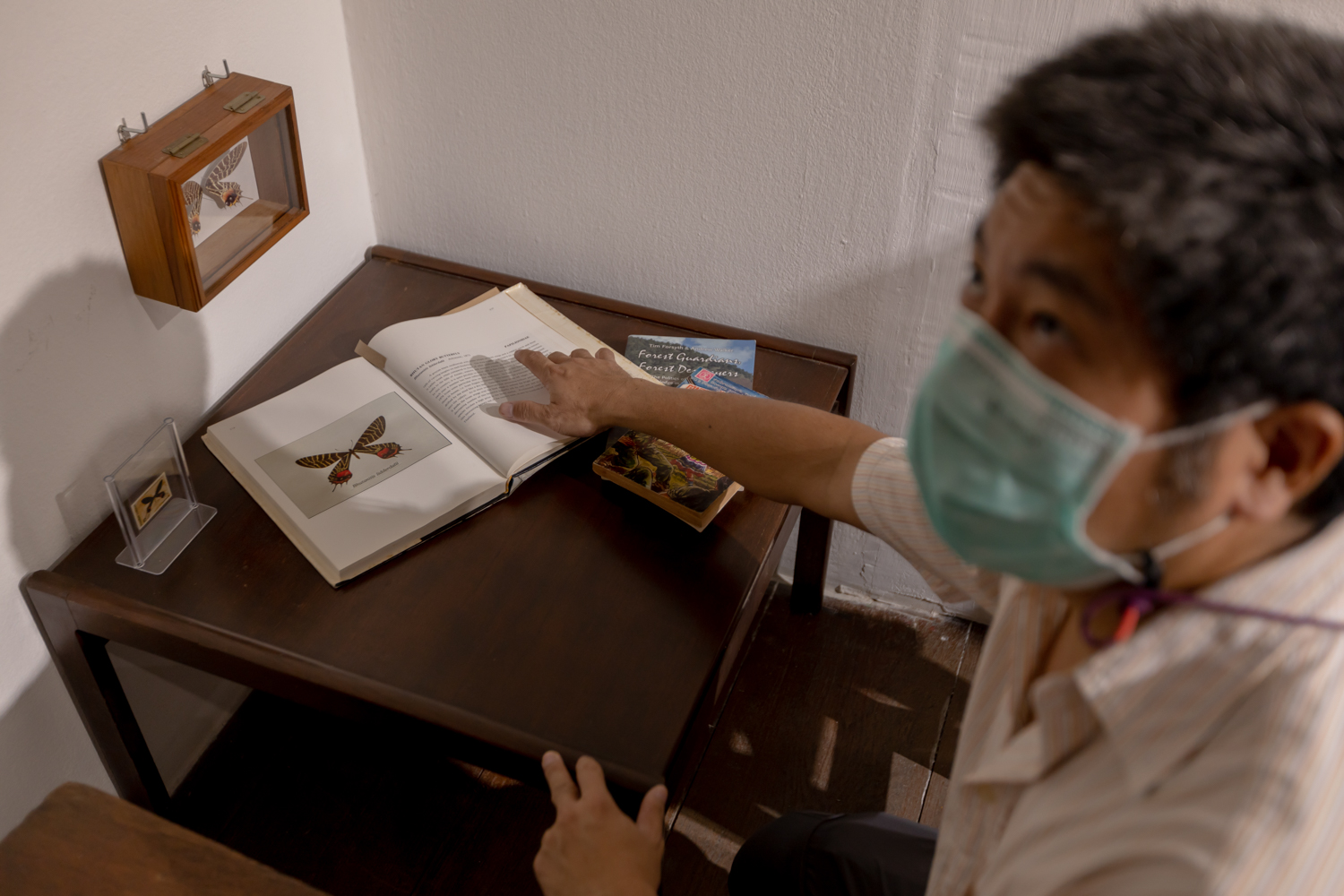

The Sa-ming butterfly made of patterned papers, Nue Saman concrete sculpture and its wooden horns, a paper mache Japanese wolf and a documentary that tells stories about the environment and legends that have been passed on through time in different parts of the world, from Singapore to Japan and other countries, Reincarnations III is a continuum of its first and second predecessors; an overlap of art and society, the environment and civilization itself. The series is special, particularly for the way it connects with the world and the documentary approach it takes with an intent to bring knowledge to reach a wider group of people in the society.
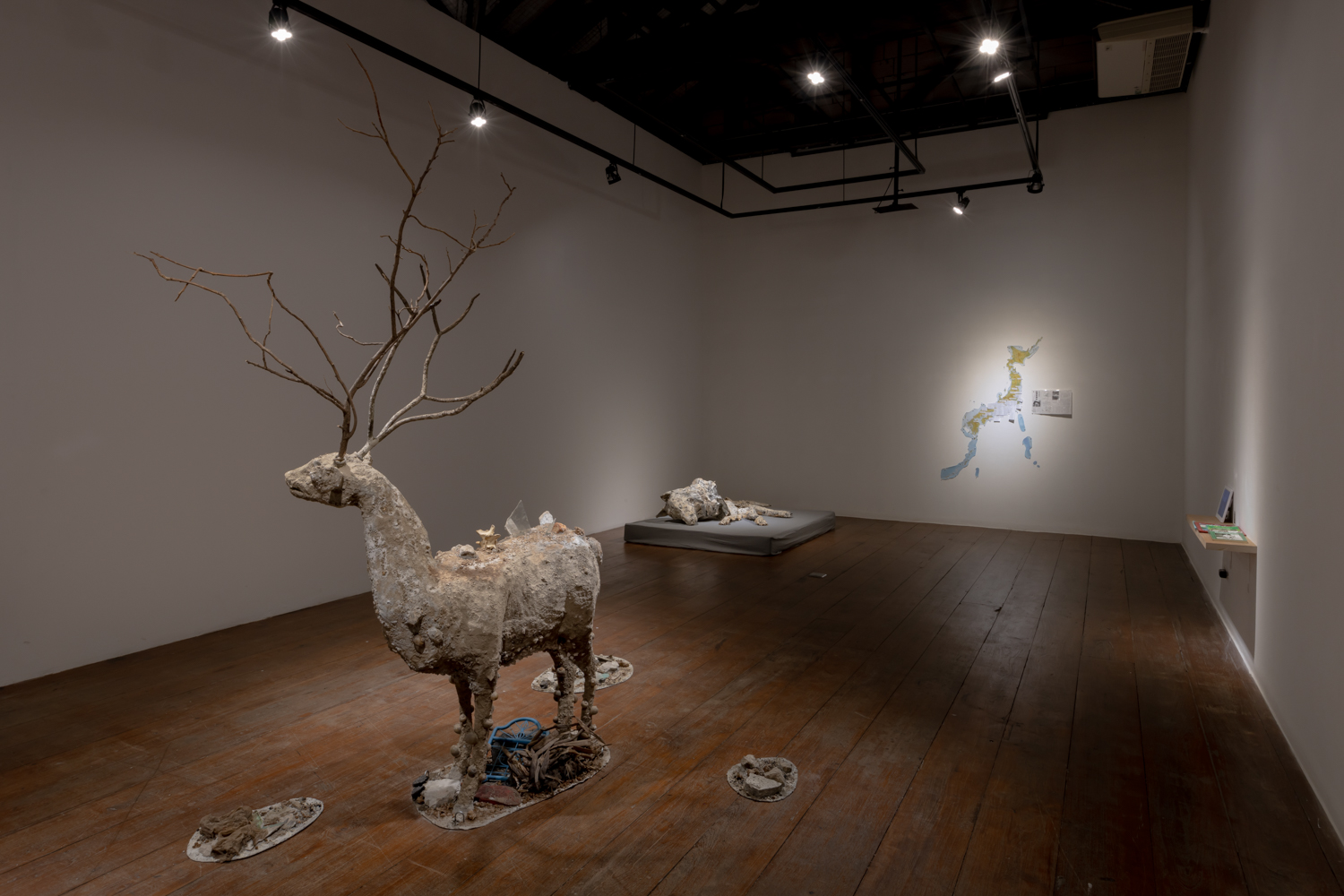
Reincarnations III – Ecologies of Life by Ruengsak Anuwatwimon is currently showing, today up until July 10th, 2021.

